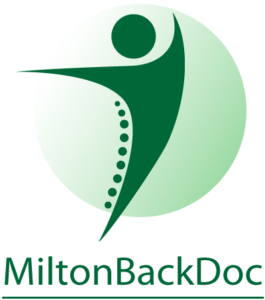Did you know that Massage therapists are expected to obtain consent from clients prior to commencing any treatment?
Did you also know that there is no specific age that determines when an individual is deemed capable? This determination will depend on the individual’s ability to understand the situation and the treatment proposed. So, this means that Massage Therapists do not need the consent of a parent if a minor is able to understand the treatment that the RMT proposes.
Did you also know that clients may withdraw consent to a treatment at any time, and this must immediately be respected by the Massage Therapist. Even if you agree to a specific treatment at the beginning of the session, you have every right to stop or change the treatment at any time during the session. There are never any consequences to stopping treatment. Your RMT will respect your decision, always.
What do I wear during a massage therapy session?
- Dress down to your own, personal comfort level, we will work around whatever you decide.
- Women, keeping your underwear and bra on is fine, if that is what you are comfortable with. We will work around anything.
- Please, DO NOT start undressing before the therapist leaves the room, and always get under the sheet before the therapist comes back in.
- Remove obstructive jewelry before getting on the table. Necklaces, ‘dangly’ earrings, watches/bracelets etc. Rings on your fingers are fine.
- For women (or long-haired men), having a hair-tie available is never a bad idea.
- You can keep any clothing on that you choose if you know that is an area that won’t be worked on, or that you do not wish to have worked on. If you’re only getting your neck/upper back treated, keeping your pants/socks on is totally fine.
- When in doubt, ask your therapist if you should wear/bring anything specific. However, it is always the clients choice, so even if you choose to stay fully clothed, we will work around that as well.
Now that we know what to wear and what to look for, lets get down to what should happen during your treatment.
The Massage Therapist, when explaining the proposed treatment to a client, must explain:
- the nature of the treatment;
- the expected benefits of the treatment;
- the material risks and side effects of the treatment proposed and any of the alternative options; and
- the likely consequences of not having the treatment.
What else is in place to protect patients?
The Health Care Consent Act (HCCA) is a law that RMT’s must follow for all treatments. Below are some specifics from the Act.
The HCCA sets out the following:
- what constitutes the elements required for consent to treatment;
- in what situations it is required;
- how to determine the client’s capacity to provide it;
- and what to do if the client is incapable.
The HCCA states that consent must:
- relate to the treatment being proposed;
- be informed;
- be voluntary; and
- must not be obtained through misrepresentation or fraud.
CMTO (College of Massage Therapists of Ontario) Policy:
RMT’s are now encouraged to have more explicit conversations with their patients with respect to areas for assessment and treatment, in order to ensure that patients are as informed as possible.
OK, so now I’m informed as to my treatment, what other legislation is there?
The Protecting Patients Act, 2017, was put in place in September 2017. This policy aims to eradicate sexual abuse by health professionals.
Part A: Maintaining Professional Boundaries
RMTs work with clients to establish a purposeful treatment program. This process includes several phases: an interview to gain an understanding of treatment goals; assessing the client’s history; and obtaining informed consent for the assessment, and, if indicated, a treatment plan.
Standard A2: Interpersonal Behaviours and Non-Verbal Communication
Registrants must ensure professional behaviour, body language and gestures by:
- Wearing attire appropriate to health care professionals and the context of the work environment.
- Engaging in appropriate personal hygiene practices.
- Providing adequate physical boundary space between the therapist and client at all stages of the client appointment.
- Physical touch or contact only in the context of assessment and treatment processes for which the client has given informed consent.
- Identify and recognize any client ‘non-verbal’ communication cues and address respectfully.
- If a client initiates a hug, the RMT must consider the intent (e.g. appreciation or sexual) prior to engaging. Hugging is not to be initiated by the RMT.
- Verify client consent throughout the assessment and treatment processes, as appropriate, to ensure client comfort and safety.
- Provide the client with the opportunity to ask questions at any point in the treatment or treatment plan.
- Use language that is respectful, courteous, and non-sexual in nature.
- Respect client culture and diversity.
- Restrict inquiry to content relevant to assessment and treatment, and focus personal disclosure of information on that which furthers the therapeutic relationship. Set and maintain appropriate boundaries in conversation at all times. The RMT is responsible for helping clients recognize when a request or RMT disclosure is outside of the therapist- client relationship and the Massage Therapy Treatment Plan.
When applying draping techniques, RMTs must:
- Ensure they have properly informed the client of the draping requirements associated with assessment and treatment prior to beginning assessment or treatment processes.
- Explain clearly to the client the regions of the body to which the RMT will be applying manual assessment or treatment applications, and whether the applications will be directly on skin or through clothing.
- Explain to the client how to prepare for assessment and treatment, including the option to remove clothing as well as the option to remained clothed – and how to position themselves for assessment/treatment.
- Confirm client comfort when treatment is performed over clothing.
- Provide opportunities for clients to ask questions.
- Apply necessary draping measures securely to engage in setting clear physical boundaries that separate the areas of treatment and the areas where no touch will be applied throughout the assessment and treatment.
- Verify client safety, sense of security and comfort level with draping/positioning measures.
- Ensure that only the area of the client’s body that is actively receiving assessment or treatment is uncovered, with the exception of the face and head.
- At the request of the client, expose areas of the body that are not considered sensitive areas when not receiving treatment for the purposes of temperature regulation or client preference (e.g. arms, feet or back).
- Ensure client informed consent is obtained where treatment requires bilateral undraping (e.g. lymphedema treatment).
- Ensure that the RMT does not reach underneath the draping.
Resources:
All information listed above can be found here: http://www.cmto.com


